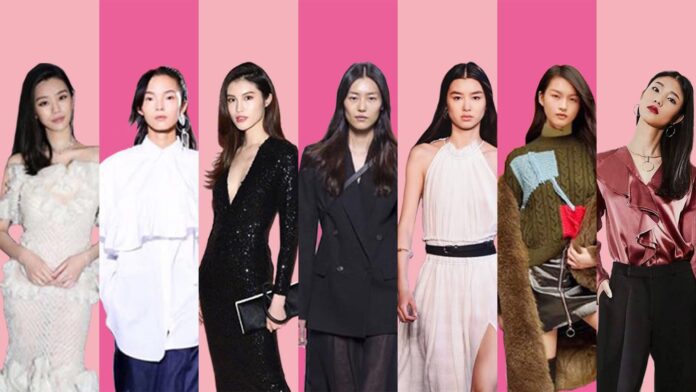Are you curious about how Asian countries like China, Singapore, and South Korea achieved rapid economic growth? Learn about the unique characteristics of the Asian model of development and how it has shaped the region’s economic and political landscape.
The Asian model of development has been praised for its success in reducing poverty and achieving rapid economic growth. However, it also faces challenges such as income inequality, environmental degradation, and political authoritarianism. Explore the pros and cons of the Asian model and its future in a changing world.
Definition of the Asian model
The term “Asian model” refers to a set of economic and political practices that have been employed by many countries in Asia, particularly in the post-World War II era. The Asian model is characterized by a strong role for the state in guiding economic development, often through policies aimed at promoting export-oriented industrialization and investing in human capital. In addition, many countries in Asia that have followed the Asian model have also been characterized by authoritarian political systems, with strong state capacity and bureaucracy. While the Asian model has been credited with contributing to the impressive economic growth seen in many Asian countries in recent decades, it has also been subject to criticism and debate due to concerns about human rights, environmental sustainability, and other challenges.
Historical Background of the Asian Model
The “Asian model” refers to the economic and political systems that emerged in East and Southeast Asia in the post-World War II period. The historical background of the Asian model can be traced back to the developmental state model, which emphasizes the role of the state in guiding economic development. The developmental state model was adopted by countries such as Japan, South Korea, Taiwan, and Singapore in the 1960s and 1970s, and was characterized by a strong state-led industrial policy, export-oriented growth, and investment in human capital. The success of these countries in achieving rapid economic growth and industrialization has led to the emulation of the Asian model by other developing countries. However, the Asian model has also been criticized for its authoritarian political systems and challenges such as income inequality and environmental degradation.
Top 10 Asian Models in The World
Ming Xi
Chinese model Ming Xi is stunning and successful. She has an amazing resume and a sizable online following where she often posts updates on her personal life and the commercial campaigns she has worked on, such as those for Dior and The Kooples. Xi is a compassionate person who uses every opportunity to support worthy charities like Save The Children.
Liu Wen
Liu Wen, a Chinese supermodel and fashion designer, is frequently referred to as “China’s first supermodel” and to say that her career has been outstanding would be an understatement. She currently works as the Global Ambassador for Chanel Beauty and has collaborated with some of the most prestigious brands in the world, including Estée Lauder. In addition, she was the first East Asian model to appear on Victoria’s Secret runway.
Shanina Shaik
Australian model Shanina Shaik, whose ancestors are from Pakistan and Lithuania, was born in Melbourne. Shaik has dabbled in acting in addition to modeling, with credits that include covers in Vogue Arabia and InStyle Germany as well as campaigns for Ksubi. The Mummy, The Separatists, and Greed are among the movies she has worked on. She is a mother as well and participated in the amFAR Gala Cannes catwalk show while expecting.
Mona Matsuoka
Mona Matsuoka, a Japanese-American fashion model, was born in Atlanta, Georgia, in 1998. One of the youngest models on this list, she is undoubtedly someone to watch in the future. Although she is still relatively unknown, she has walked the runway for LaQuan Smith and appeared in spreads for Vogue China and Elle Vietnam. Matsuoka has performed at events for Louis Vuitton and Miu Miu as a DJ.
Tao Okamoto
Tao Okamoto, a Japanese actress and model, was born in 1985 in Ichikawa, Chiba. She is regarded as one of the most well-known models from Japan and has appeared in editorials for esteemed publications including the international editions of Vogue and Harper’s Bazaar in addition to walking the runways of numerous renowned fashion companies. Her acting resume includes roles in Batman v. Superman and The Wolverine. She is not just a dedicated worker but also an activist for the environment.
Chiharu Okunugi
Chiharu Okunugi, a Japanese fashion model, has landed campaigns for Louis Vuitton, Zara, and Loewe. Additionally, she has walked down the runways for brands like Brandon Maxwell, Balmain, and Anna Sui. Okunugi has also had noteworthy covers for Vogue Taiwan and Love magazine. Her social media accounts showcase her love of the outdoors and travel to some of the most stunning places on earth when she isn’t working.
Xiao Wen Ju
Xiao Wen Ju was born in Xi’an, the provincial capital of central China’s Shaanxi Province. Since the beginning of her professional career in 2010, she has appeared in numerous high-profile publications, including T magazine China, Numéro China, Marie Claire China, and numerous international editions of Vogue. She has appeared on the catwalks of numerous major brands, including DKNY, Prada, and the 2016 Victoria’s Secret Major Show.
Characteristics of the Asian Model
The Asian model refers to a set of economic policies and practices that were employed by various countries in Asia, particularly during the post-World War II period. Some of the key characteristics of the Asian model include state-led development, export-oriented industrialization, and investment in human capital. In terms of political systems, the Asian model is often associated with authoritarianism, a strong state capacity, and Confucian values. While the Asian model has been credited with promoting rapid economic growth and development in countries like China, Singapore, South Korea, and Taiwan, it has also faced criticism for its human rights concerns, environmental issues, and economic challenges like income inequality and an aging population. As the world continues to change, the future of the Asian model remains uncertain.
Chutimon Chuengcharoensukying
Chutimon Chuengcharoensukying, better known by her stage name Aokbab, is a Thai actress and model who was born in Bangkok in 1996. She has established a solid reputation in the field thanks to her work on the Chanel Cruise, Calvin Klein, and Tom Ford Beauty collections. Additionally, she has graced the covers of numerous publications, including Harper’s Bazaar Thailand and Elle, and in 2017 she won the Screen International Rising Star Asia Award at the New York Asian Film Festival.
Margaret Zhang
Margaret Zhang, an Australian-Chinese model, stylist, and editor-in-chief of Vogue China starting in 2021, was born in Australia in 1993. She is 27 years old. She has a sizable social media following, and her profile is full of stunning, emotive images of Zhang and her vivid blue aqua hair, as well as Vogue China magazine covers and picturesque pictures from the locations she has traveled.
Shu Pei
Model Shu Pei is from China. You can see that she takes motherhood, another duty, seriously by taking a quick look at her social media. She frequently shares heartwarming pictures of her family and talks about how her daughter has changed her. Additionally, they worked together on an adorable campaign for Little Mo & Co.
Economic Policies and Practices
Economic policies and practices refer to the actions and strategies implemented by governments and businesses to manage economic activities and achieve specific goals. These policies can include tax policies, monetary policies, trade policies, and investment policies, among others. The effectiveness of economic policies and practices can have significant implications for economic growth, job creation, and income distribution. For example, governments may choose to pursue export-oriented industrialization as a strategy for economic development, while businesses may prioritize research and development as a means of achieving long-term growth. Effective economic policies and practices require careful planning, coordination, and monitoring to ensure that they align with broader social, political, and environmental goals.
Criticisms and Challenges to the Asian Model
The Asian model of development has been widely praised for its success in lifting millions of people out of poverty and achieving rapid economic growth in countries such as China, South Korea, and Singapore. However, it has also faced significant criticisms and challenges. One of the main criticisms of the Asian model is its lack of emphasis on human rights and democratic values. Authoritarianism, censorship, and restrictions on freedom of speech are common in many Asian countries, which has led to concerns about human rights violations. Additionally, the model’s heavy focus on economic growth has contributed to environmental degradation, income inequality, and aging populations. Technological innovation and the rise of alternative economic models may present further challenges to the Asian model in the future. As countries in Asia continue to develop, they will need to address these criticisms and adapt to changing global circumstances to maintain their success.
Examples of countries that have implemented the Asian model
Several countries in Asia have implemented the Asian model of development, which emphasizes state-led economic growth and investment in human capital. One of the most prominent examples is China, which has experienced rapid economic growth since implementing market-oriented reforms in the 1980s while maintaining strong state control. Singapore is another example, with its government playing a significant role in guiding economic development and implementing policies to attract foreign investment. South Korea is also known for its state-led development, particularly in the areas of heavy industry and technology. Taiwan has also successfully implemented the Asian model, with government support for strategic industries and investment in education and human capital. While the Asian model has faced criticisms and challenges, these countries have demonstrated its potential for economic development and growth.
Alternatives to the Asian model
The Asian model of development, which prioritizes state-led economic growth and authoritarian political systems, has faced criticism for its human rights concerns, environmental issues, and economic challenges such as income inequality and an aging population. As a result, alternatives to this model have emerged, such as neoliberalism and social democracy. Neoliberalism emphasizes free market principles and privatization, while social democracy emphasizes a more equal distribution of resources through social welfare programs. Other economic models in the Global South, such as the Latin American model, also offer alternatives to the Asian model. However, these models have their own challenges and limitations. As the world continues to change, it remains to be seen which model will ultimately prove to be the most successful.
Conclusion
Summary of key points of the Asian Model
The Asian model refers to a set of economic and political practices that have been employed by various East Asian countries to achieve rapid economic growth and development. Key characteristics of the Asian model include state-led development, export-oriented industrialization, and investment in human capital. However, the Asian model has faced criticism for its authoritarian political systems, human rights concerns, and environmental issues. Despite these challenges, countries such as China, Singapore, South Korea, and Taiwan have successfully implemented the Asian model and achieved significant economic success. Alternatives to the Asian model include neoliberalism and social democracy. Understanding the key points of the Asian model is important for policymakers and scholars interested in economic development and globalization.
Future of the Asian Model in a changing world
The Asian model of development has been touted as a success story, with countries such as China, Singapore, South Korea, and Taiwan achieving rapid economic growth and poverty reduction. However, in a changing world marked by global economic shifts, technological disruption, and environmental challenges, the future of the Asian model is uncertain. Some experts argue that the Asian model may no longer be viable, as it relies heavily on state-led development and export-oriented industrialization, which could lead to economic stagnation and environmental degradation. Others argue that the Asian model can evolve to address these challenges, by promoting innovation and sustainability and adopting more inclusive and democratic political systems. The future of the Asian model depends on how Asian countries respond to these challenges and adapt to a changing world.



